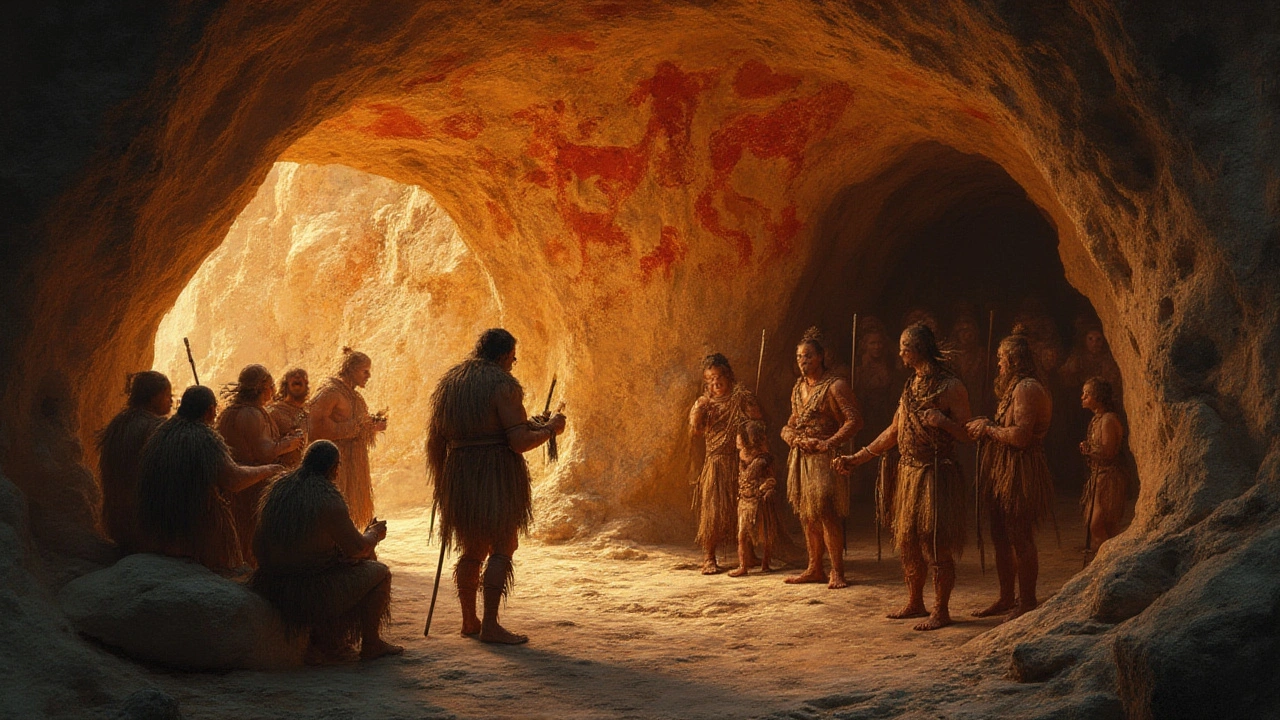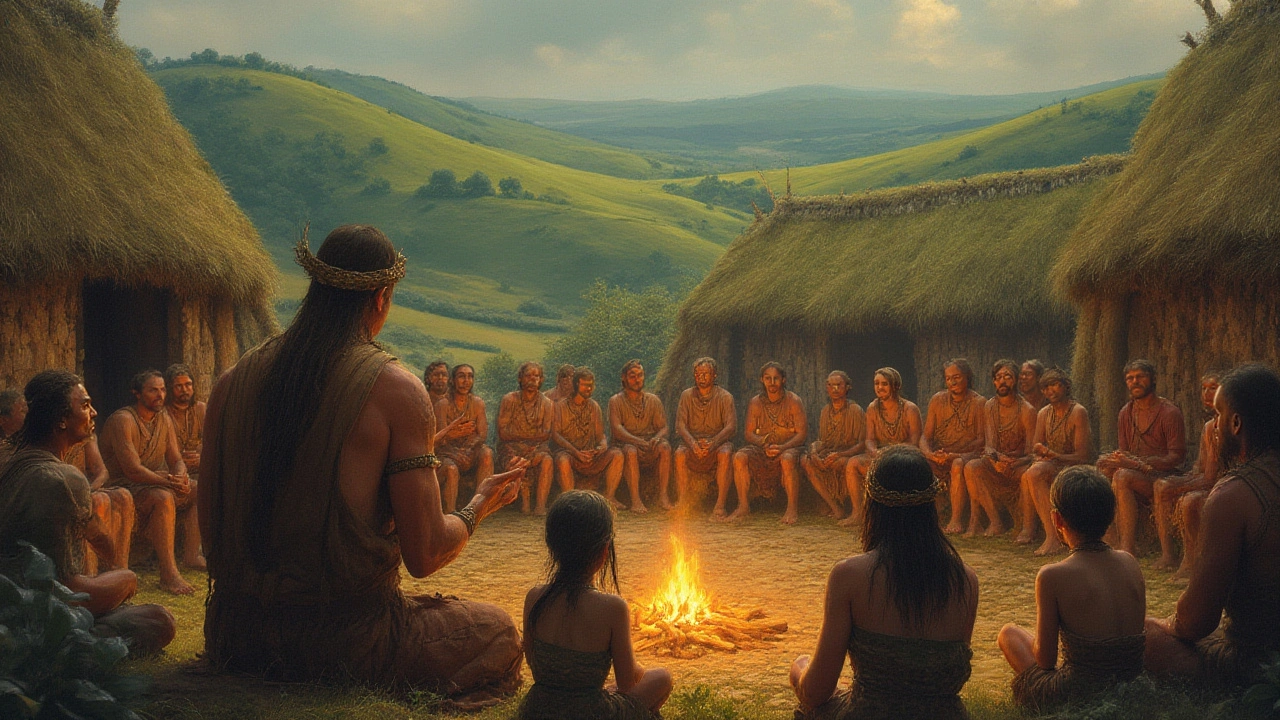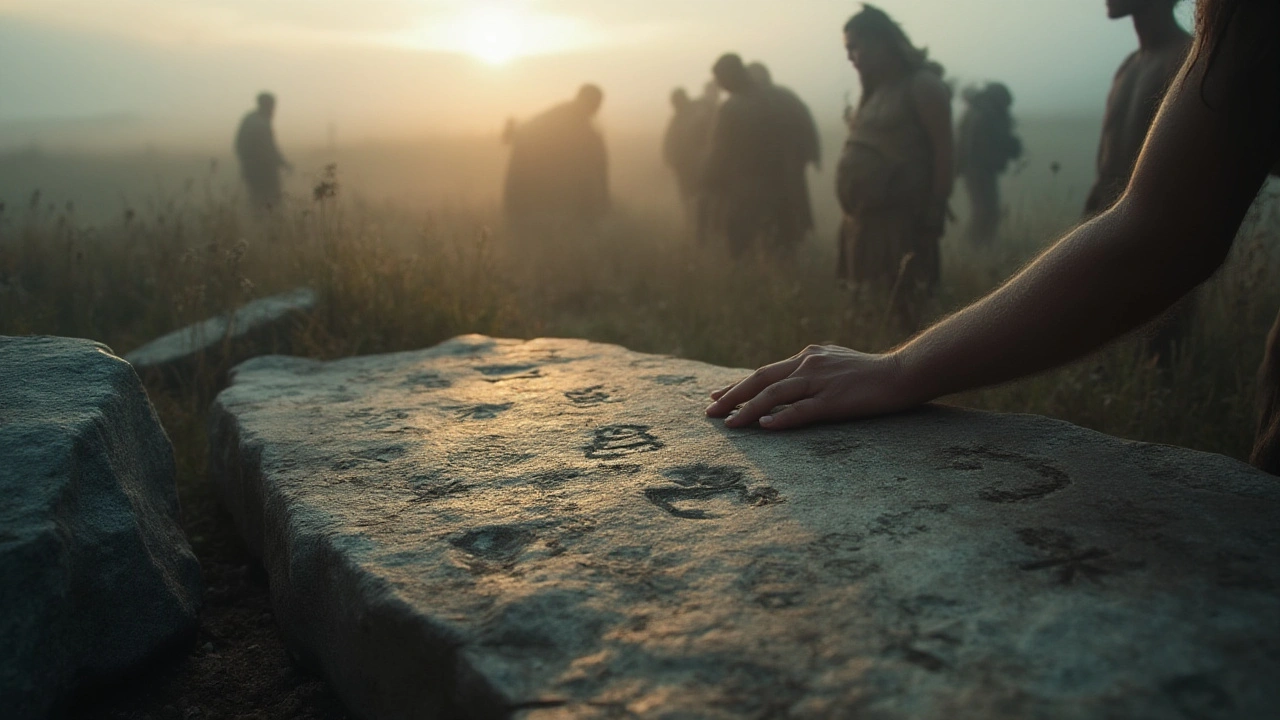
Imagine a world without WiFi, telegraphs, or newspapers. Not even a pigeon to send a message, much less TikTok. Now picture a group of people sitting around a flickering fire, trading stories of hunters, spirits, and distant lands. Before humans had writing, they had the urge to share what happened—what mattered. That urge to communicate, to record, warn, and wow, is the root of all media. And it runs unimaginably deep.
Storytelling Before Writing: The Root of All Media
Before someone picked up a stick to scratch a symbol in stone, news didn’t travel on paper or clay tablets. It moved on air: from one person’s mouth to another’s ear. Storytelling, probably the oldest human ritual besides eating and sleeping, was our original media. Early humans relied on spoken word because there was nothing else. Long before cities and countries, language itself was a tool for passing knowledge.
This wasn’t about swapping gossip for fun. The first stories were about survival—where the lions lurked, how to find water, which plants you should avoid. Some researchers say even 50,000 years ago, stories were key to human progress. Indigenous cultures today still keep huge chunks of history and science in traditional myths and tales. For example, Aboriginal Australian songlines are not just music, they are maps, navigation tools, even ecological guides, sung and remembered across thousands of miles for generations.
Passing knowledge down through stories made communities stronger. Some groups developed roles like the griot in West Africa or shamans in Siberia: people whose job it was to remember and retell the story of the tribe, sometimes over the span of an entire lifetime. The stories didn’t need to be true—but they did need to stick, and be retold accurately enough to matter. That’s media at its most raw and powerful.
Cave Art: Humanity’s First Visual News
Humans love a good picture, and we’ve always been visual creatures. While spoken stories crossed campfires, some ancient humans started recording information in permanent, shareable ways: on stone walls, using nothing but their hands and natural dyes. The oldest known cave paintings—like those in Chauvet Cave, France, or the vivid handprints of Sulawesi, Indonesia—go back almost 40,000 years. That’s older than the oldest written language by more than 30,000 years.
These weren’t just half-asleep doodles. Many researchers argue cave paintings were a kind of news broadcast: sharing key facts (“we saw bison here last season”), warnings (“danger this way”), and even community values (“these animals or gods are important to us”). Handy, since you couldn’t just post an update on Facebook.
Not all early art is found hidden in caves, either. Sometimes it’s carved in open-air rock faces, pottery shards, or even bones. But the significance was the same: make the message last. Keep it visible, not just for the next visitor, but for anyone who comes by for hundreds (even thousands) of years. Visual media wasn’t just about beauty—it was about memory, survival, and belonging.
| Site | Country | Estimated Age (Years) | Notes |
|---|---|---|---|
| Chauvet | France | 34,000 | Horses, lions, rhinos, complex scenes |
| Altamira | Spain | 36,000 | Rich animal depictions, red ochre handprints |
| Sulawesi | Indonesia | 39,900 | Earliest known hand stencils |
| Bhimbetka | India | 30,000 | Cave murals, dance and hunting scenes |
Fast-forward to today, and our love of memes or viral videos starts to make sense. The oldest form of media wasn’t just about communication: it was about sharing, belonging, and shaping group identity—one wall at a time.

Symbols and Writing: The Jump from Memory to Record
There’s only so much the human brain can cram in, and stories can get twisted along the line. Eventually, humanity stumbled on a hack: symbols and writing. The first confirmed writing systems popped up about 5200 years ago in Sumer (today’s Iraq) and Egypt, but the urge to make marks is way older.
The earliest known proto-writing symbols date back 9000 years in Jiahu, China—carved on tortoise shells. These scratched marks probably didn’t represent full speech, but they showed an early drive to “fix” an idea in place. In Mesopotamia, clay tablets became the go-to medium by 3200 BCE. Cuneiform script—those wedge-shaped marks—was used for everything from tax records to epic poetry. Egyptians, meanwhile, were drawing up bureaucratic lists and pharaoh propaganda in hieroglyphs. Suddenly, stories could travel not only across space, but time.
This was a turning point. Media could outlast its maker. Suddenly, the scribe or the artist wasn’t the only keeper of the story. If you wanted to know when the next festival was or how your grandfather signed a treaty, someone could just check the stones or scrolls. It’s easy to see the seeds of modern newspapers, Wikipedia, and even blockchain here.
- Earliest written news: The Acta Diurna, carved on stone in ancient Rome (59 BCE), was a daily public notice posted in busy areas. Think of it as the first public newspaper—official decrees, court decisions, gladiator schedules, you name it.
- First mass media: Gutenberg’s printing press (about 1440 CE) made written word accessible to anyone, not just the scribes and rich folks. Suddenly, news could spread like wildfire—from big city to backwater in days.
Yet for most of human history, media still relied on a physical object—something that could be lost, burned, or buried. That made every scrap precious, every scribe powerful.
From Messengers to Broadcast: Making Media Move
It’s hard to believe, but for thousands of years, the fastest way to get news from one area to another was still to send a person—or sometimes a bird. Messenger runners, horseback couriers, signal fires on hills—it wasn’t until much later that media began to really “travel.”
The ancient Persians had a relay system called the ‘Angarium’—messengers stationed at regular intervals, passing news faster than a single runner ever could. In China, smoke signals and drums provided basic battlefield news. Genghis Khan’s vast Mongol Empire ran an express postal service, the Yam, using horses and waystations across thousands of miles.
Word-of-mouth and human messengers meant news wasn’t always accurate, and distance nearly always created delay. But the urge to share information led to creative solutions. The Greeks developed the Phryctoria—signal towers that used fires arranged in coded patterns to transfer pre-agreed messages across the countryside.
With the arrival of paper (invented in China about 200 BCE), suddenly messages became even lighter and easier to send. Still, communication was a privilege. Royalty had scribes and couriers; the average person depended on rumor or gossip.
As towns became cities and governments grew, news began to shape society. The first ‘newsletters’—handwritten and copied for traders and politicians—began to appear in 16th-century Europe. These letters, called “avvisi” in Venice, included shipping news, market reports, and international politics. They became so important that governments often tried to censor or control them. The seeds of modern journalism were planted, but always based on the same need: get information to people who need it, while it still matters.

Echoes of Ancient Media in Modern Times
Next time your WhatsApp group blows up with the latest rumor or you see a TikTok trend jumping borders, think about what you’re really seeing. The tech has changed, but the behavior runs thousands of years deep. Cave paintings weren’t just “art”—they were the first memes, designed to survive. Messengers on horseback were the original DMs (delayed, sure, but still direct-to-recipient). Campfire stories? Imagine them as real-life podcasts for tribes.
The more media changes, the more it keeps the old bones of storytelling, symbols, and the urge to “pass it on.” Every time someone takes a selfie, shares an audio clip, or doodles on their mate’s hand, it’s a callback to humanity’s oldest form of creative connection.
So, what counts as the absolute oldest form of media? If you look at the facts, it has to be spoken storytelling—a tradition so ancient, it left marks in the shape of brains and cultures before we figured out how to write anything down. But if you mean the first “recorded” media—something you could revisit months or years later—then those handprints in Indonesian caves or the bison on the cave walls of France win the title every time.
Here’s the kicker: we might have digital files and instant video calls now, but we’re basically doing the same thing early humans did with ochre and a torch—making our mark, telling our truth, hoping someone’s still listening, even long after we’re gone. That’s the heartbeat of media, ancient or new, and it’s not going anywhere soon.